Mantuvec
Posts: 100
Joined: 10/13/2020
Status: offline

|
Welcome to our sixth Developer Diary.
This diary is a big one as it discusses the economy in more detail. You’ll learn what makes the Distant Worlds economy unique and how you can make sure that your worlds are prosperous and your empire is strong.
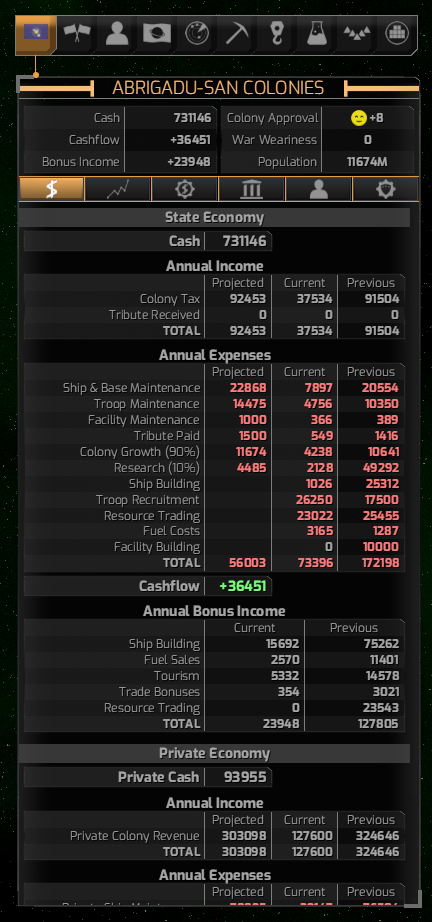
In Distant Worlds 2, your economy is divided into two parts. The first is the state-controlled economy, over which you have full control. The second is the private or civilian economy, which is everything else. As the state, while you have a great deal of influence over how your private economy is structured, you do not control it and you also have the responsibility to protect it from disruption by pirates and other threats.
As with all areas in Distant Worlds 2, if you prefer to allow your advisors to fully run the state economy for you and focus on other areas of the game, that is possible through the automation settings. For those who enjoy some economic planning and optimization, you can choose how much you wish to intervene, right down to manually controlling all state economic decisions.
The state controls space exploration and construction, colony ships, military ships, stations and troops, spaceports, research stations and monitoring stations. The state is also in charge of setting tax rates, building economic facilitie and adjusting bonus funding.
The private economy controls mining ships, mining stations, freighters, passenger ships and resort bases. It pays for its own construction, maintenance and fuel costs, but also earns revenue from its activities, which it keeps (except for the portion paid to the state in construction or fuel fees or taxes).

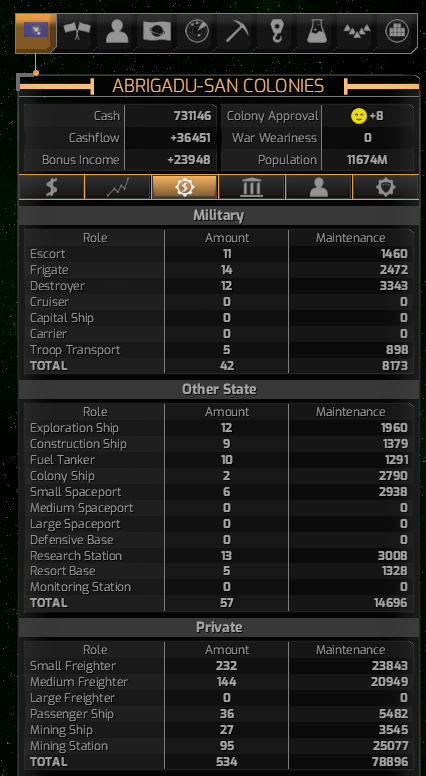
This process starts with your state-controlled exploration ships discovering new systems and worlds. Some of these worlds will contain valuable resources. Those resource fit into three general categories:
- Fuel, which is needed for all your space reactors and hyperdrives to function at peak efficiency (in other words, fuel is essential to just about everything in your space-faring economy)
- Construction Resources, which are required for your worlds to grow (they consume a variety of these on a regular basis), as well as to build or upgrade new ships, facilities and stations. Without these, nothing new really gets build and colony growth can be significantly slowed.
- Luxury Resources, which are required for your worlds to develop, though they also can offer other significant bonuses depending on the specific resource. Some of these are quite rare, or even unique and they come with much higher bonuses. Development is the difference between a relatively primitive frontier world eking out an existence with just enough technology to survive and a thriving core world which represents the pinnacle of your space civilization. Your population alone will increase development, but luxury resources help a great deal more.
Once you’ve found these resources, private Mining Ships (unless you’re playing as a Mercantile Guild, in which case you can also build and control these) can extract these resources for you. You may also effectively grant a license to the private economy to build a mining station at a particular location, using one of your state-controlled construction ships. These large mining stations are constructed by the state, but paid for and maintained by the private economy and are much faster at extracting resources, though they require private freighters to also pick up those resources and transport them to where they are needed.

This combination of state exploration and granting of mining rights combined with private resource extraction and transport is the most basic level of your economy. Keeping the flow of resources moving efficiently from your mining stations to where they are needed is up to the civilian stations and ships and you can watch them go about this business, while knowing that you don’t need to spend much time worrying about it once you’ve made sure the mining stations are where you want them.

The next most important pieces are your worlds and your spaceports. Your worlds have your population and your people will produce a certain level of productive output on their own, but without adequate Construction and Luxury resources, their potential will be greatly limited. If you supply them with abundant resources, you will find your worlds increasing much more quickly in population, development and happiness. That combination will also allow for higher tax rates and much more income from each world to flow into your state treasury. You can adjust the resource demands and the tax rate on each world if you so wish, or allow your advisors to automatically adjust these.
Spaceports are the largest state-controlled space stations and they are typically built at your populated worlds. From an economy standpoint, they act as hubs for your economy. The freighters and mining ships will transport resources first to your spaceports and from there they will be distributed further to the worlds or stations that need them.
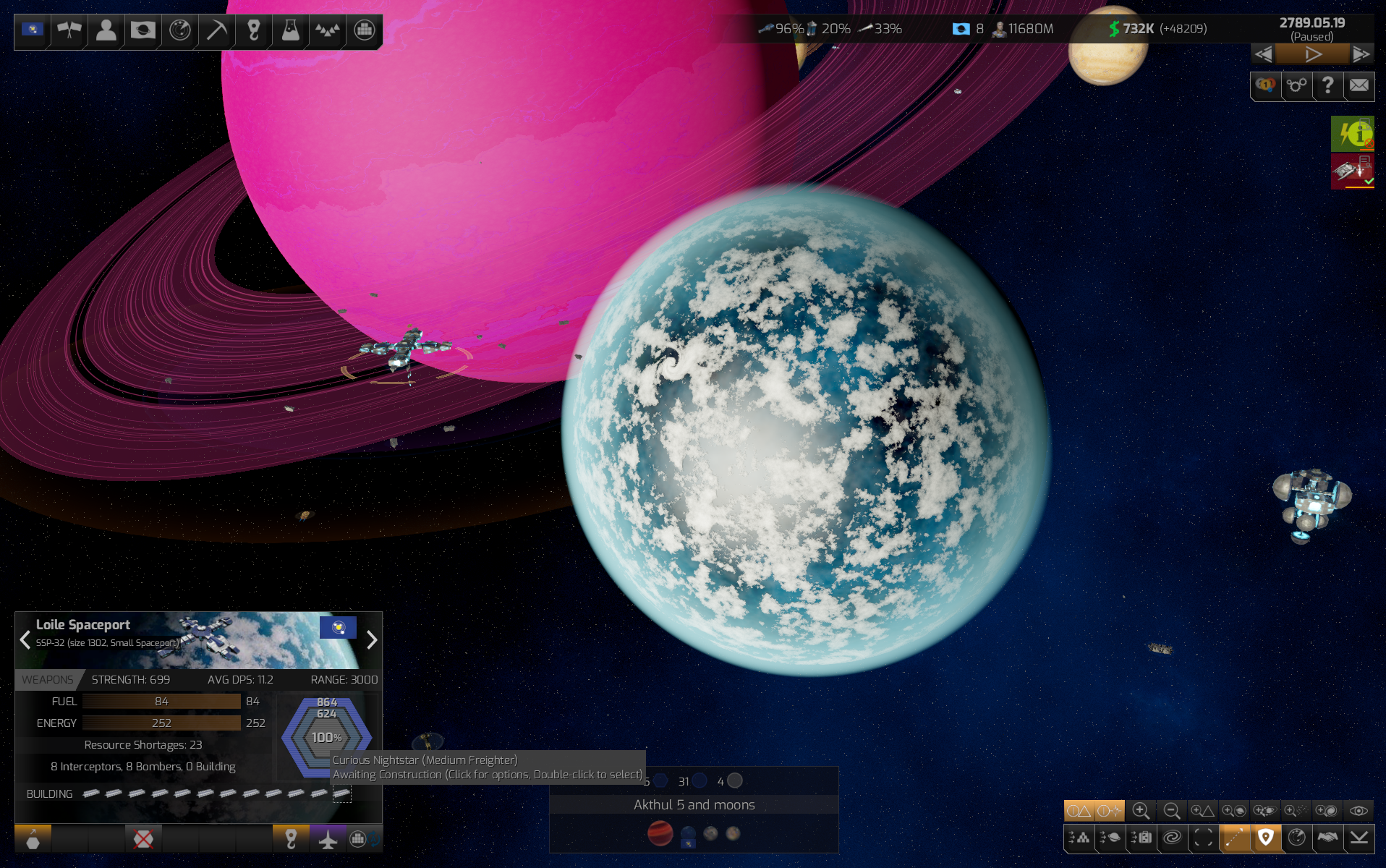
Spaceports are also the locations where most space construction happens, both for your state ships and the private economy’s ships. The private economy pays the state when it needs the use of these shipyards, which can result in additional bonus income for the state.
Once you have a good network of mining stations, worlds and spaceports setup, the economy will generally run itself quite well barring external disruptions, either due to general threats or due to war. In those cases, your state fleets and troops may be needed to restore peace and orderly economic activity.
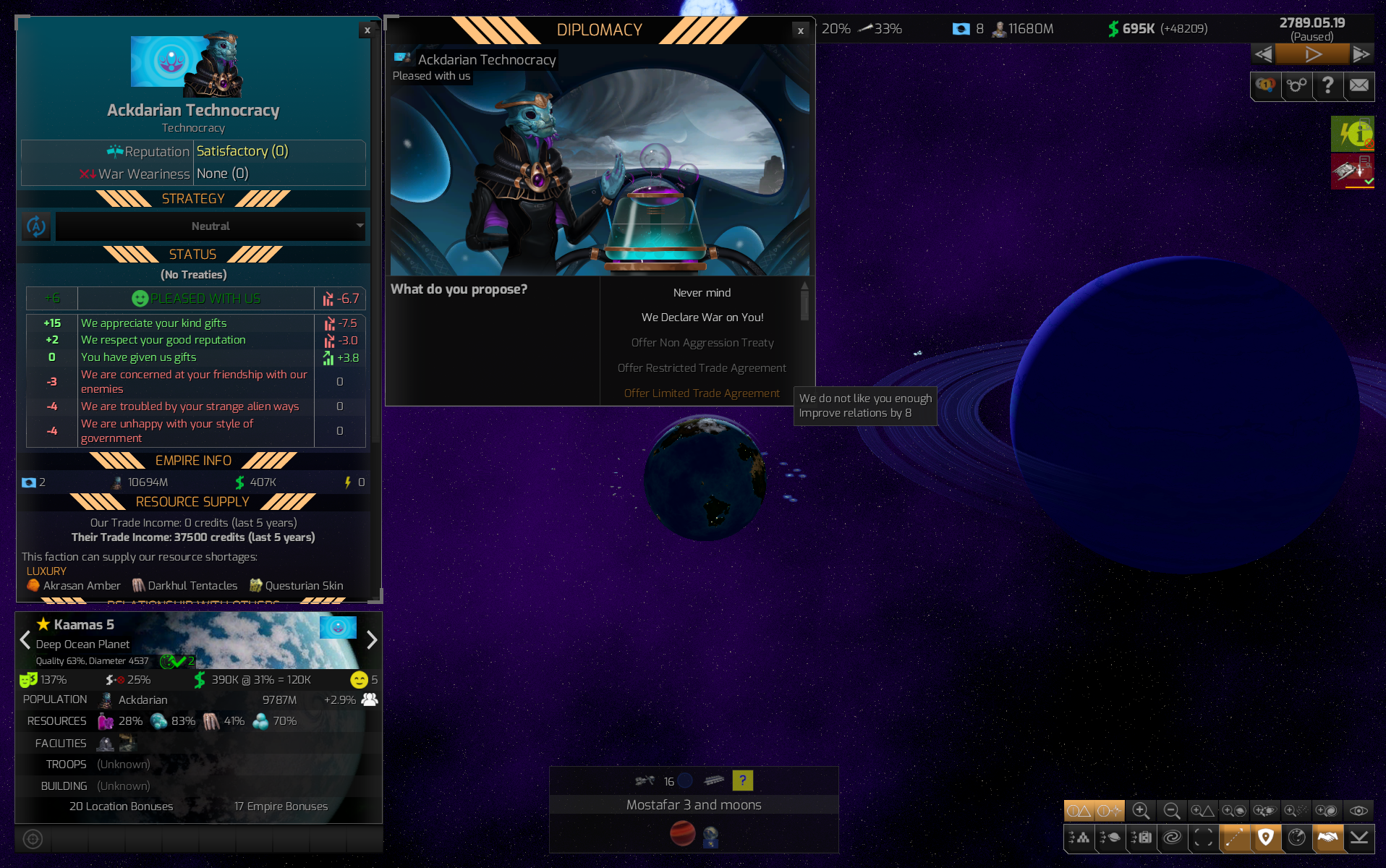
You can also gain access to resources and resource trading income through diplomacy. In Distant Worlds 2, by default you do not begin with the ability to trade with another Empire, but you can sign one of three trade treaties to allow trade. Each treaty has varying degrees of resource availability balanced against tariffs charged. Restricted Trade charges the highest tariffs and makes available only the most abundant resources. Limited Trade is a balance. Free Trade allows full access to all resources without any tariffs. Commerce Centers on your Spaceports as well as trading bonuses from other sources can also increase the value of trade with other empires.

Once you discover some particularly scenic locations in the galaxy that are near your populated worlds, the civilian economy will also be looking to build some resort bases. When built at good scenic locations with easy access to large populations, these can earn some nice additional tourism income for your economy.
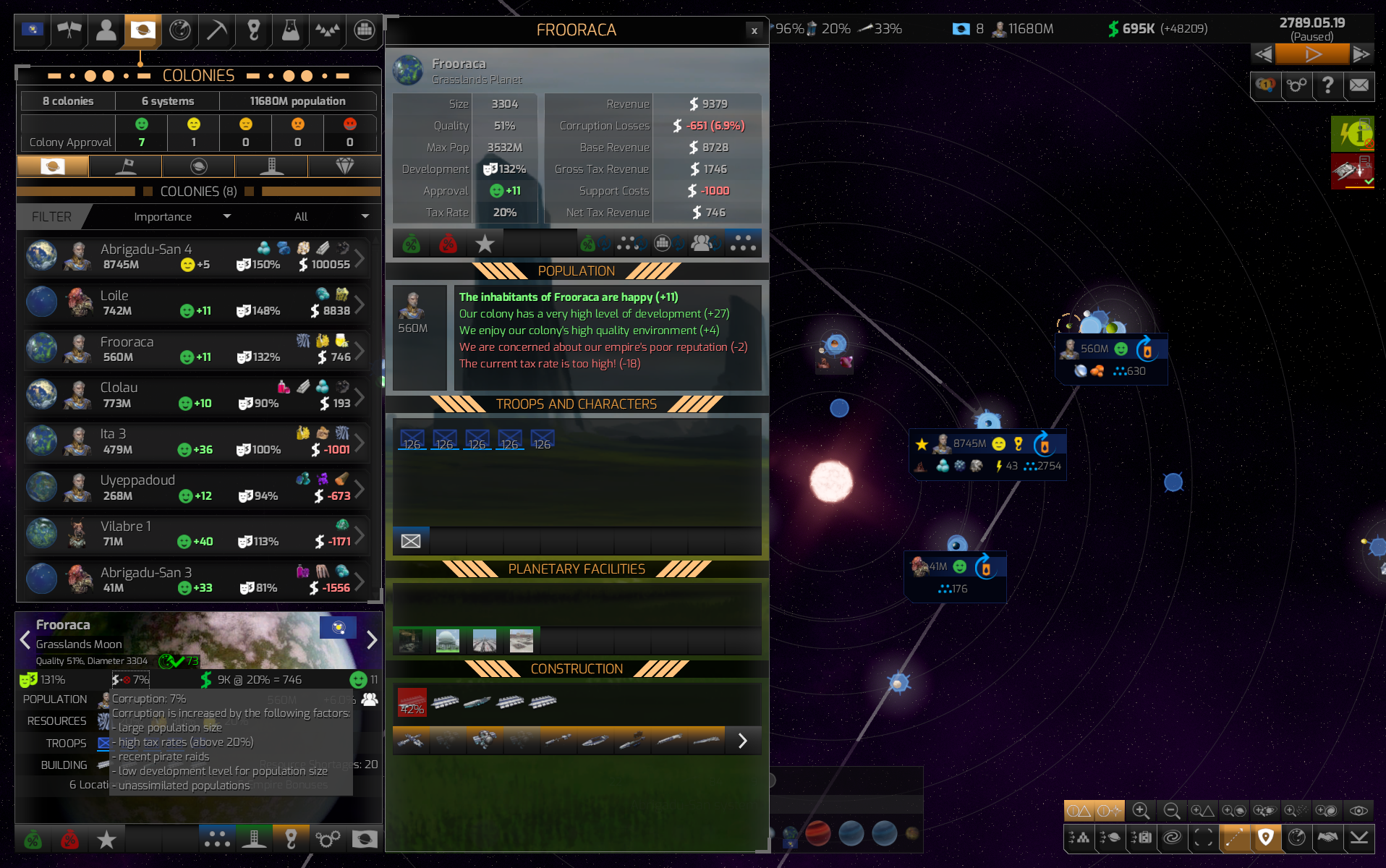
Corruption is also something that will become a larger issue as your new worlds are farther away from your capitol world and as your worlds grow ever larger in population. This acts to reduce your taxable revenue from that world, but construction of planetary administration facilities can reduce the effects of corruption and ensure that the long arm of the law reaches across your empire.
In Distant Worlds 2, when you have a good positive cashflow as a result of a well functioning economy, you can invest those additional funds into the usual things like building new ships and stations, or new planetary facilities, or trying to “crash research” a particularly important research project. You can also invest it into bonus funding for research and colony growth. By default, this bonus funding is automatically funded once you’ve met your empire’s needs for maintenance and other expenses.
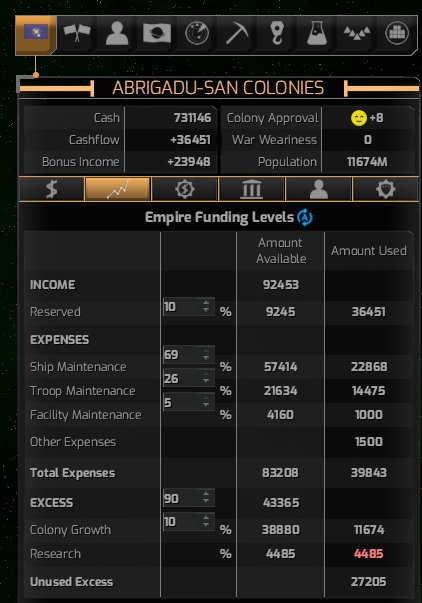
Without this funding, your research stations will roughly halve their output and your colony population will grow significantly more slowly. Under normal circumstances, this is not an issue, but when events occur that disrupt your economy, losing this bonus funding can result in significant penalties to your empire’s performance. If you build a robust economy and protect it well, hopefully you’ll never have to find out about that the hard way!
If you read through all of this, let us know if you have any questions regarding the economy in Distant Worlds 2.
|
 Printable Version
Printable Version
















 New Messages
New Messages No New Messages
No New Messages Hot Topic w/ New Messages
Hot Topic w/ New Messages Hot Topic w/o New Messages
Hot Topic w/o New Messages Locked w/ New Messages
Locked w/ New Messages Locked w/o New Messages
Locked w/o New Messages Post New Thread
Post New Thread